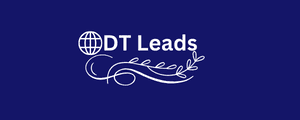Obstructive sleep apnea syndrome is one of the disorders detect by infant polysomnography . Sleep monitoring helps, for example, to differentiate OSAS and primary snoring. Which has a benign course. There are still other conditions investigate with the support of this important test. Which can be performed in the laboratory or at the patient’s home. In the next topics, I present the main information about the purpose, contraindications and how pediatric polysomnography is perform. You will also see the benefits of online reports issued via the telemedicine platform. What is infant polysomnography? Child polysomnography is an exam that monitors various body functions while the child sleeps . Using electrodes and sensors, the procedure assesses changes that occur during sleep. So, give supports the diagnosis of neurological, respiratory, muscular anomalies, among others.
It all depends on the tests done during monitoring
Electrocardiogram (ECG)to show the electrical activity of the heart muscle Electroencephalogram (EEG)to assess the electrical impulses of the brain pulse oximetryto measure blood oxygen saturation. Electromyogram to observe muscle movement Electro-oculogram to identify the sleep phases. And when they start, through eye movement – because thedeep Brazil Mobile Number List or REM sleepit is characterized by rapid eye movements. Next, I talk more about the objectives of polysomnography in children. What is infant polysomnography used for? Child polysomnography offers a panorama with data on the activities of the child’s body while he sleeps. Which is of great importance, as several vital processes change during sleep . One of them is breathing, which can be affected by muscle relaxation, malformations or neurological causes, causing obstructive sleep apnea .
When the respiratory pause
Of more than 10 seconds is frequent, it indicates the diagnosis of OSAS (syndrome mentioned at the beginning of the article). The disease can affect people of all ages, but it is common among pediatric patients, affecting 1% to 3% of children who snore . According to the Brazilian Society of Pneumology and Phthisiology (SBPT), snoring is part of the routine of 10% of boys and girls . In the study “Polysomnographic DT Leads findings in children with laryngopathies”, the authors state that. The gold standard diagnostic test for OSAS in childhood is polysomnography . When it perform. Polysomnography clearly separates patients with primary snoring from patients with sleep apnea (obstructive, central and mixed). Other conditions investigated by sleep monitoring are. night terror Nightmares Nocturnal Enuresis Sleep-walking Excessive.

